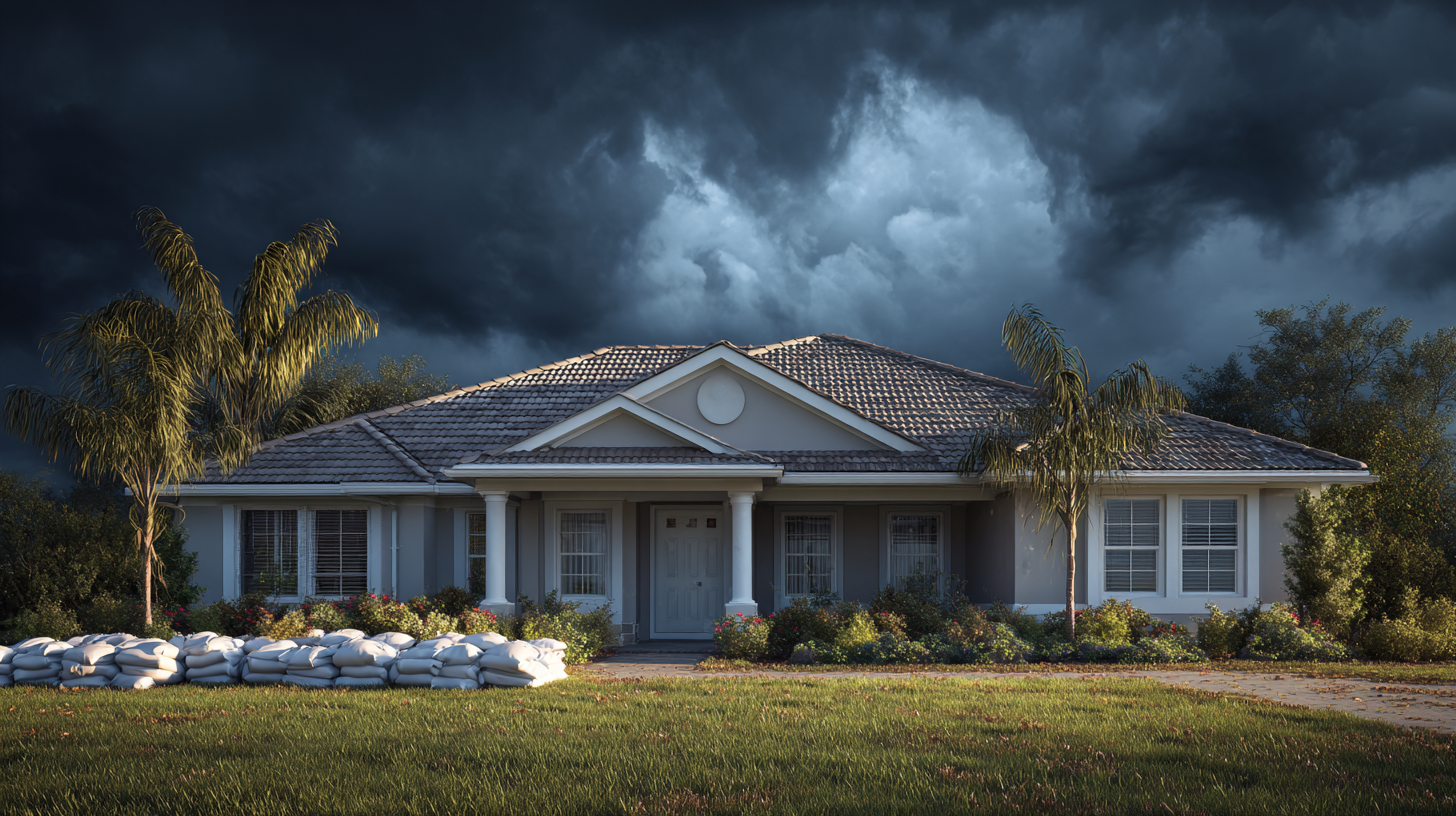Living in hurricane-prone areas requires proactive measures to safeguard your home and family. Here’s a breakdown of strategies to prevent or minimize damage:
Protecting the roof and exterior
Secure the Roof:
- Inspect your roof regularly for loose or damaged shingles and repair them promptly.
- Consider adding hurricane straps or clips to strengthen the connection between the roof and the walls.
- If replacing your roof, choose wind-resistant materials like metal or consider a hip roof design.
Reinforce Windows and Doors:
- Install impact-resistant windows or storm shutters to protect against shattered glass and flying debris.
- Consider reinforcing exterior doors with heavy-duty deadbolts and longer hinge screws.
Strengthen the Garage Door:
- Standard garage doors are often a weak point.
- Reinforce the garage door with bracing and strengthen the wheel tracks.
Maintain the Exterior:
- Regularly trim trees and remove dead or weak branches, as they can become projectiles during strong winds.
- Clear debris from gutters and downspouts to ensure proper water flow and prevent overflow near the foundation.
Remove Loose Items:
- Bring in or anchor outdoor furniture, grills, and other items that could become airborne.
- Address Siding Vulnerabilities:
- Repair or replace loose or damaged siding to prevent wind and water intrusion.
- Consider materials like brick or fiber-cement siding, which are more resilient than wood or vinyl.
Water damage prevention
Elevate Essential Systems:
- Raise electrical outlets, switches, circuit breakers, and mechanical systems (like AC units and heat pumps) above potential flood levels.
Seal Gaps and Openings:
- Use caulk and weather stripping to seal gaps around windows, doors, and any other openings.
Improve Drainage:
- Maintain proper grading around the home, ensuring the ground slopes away from the foundation.
- Consider installing French drains or catch basins in areas prone to water buildup.
- Inspect and maintain your sump pump regularly, and consider a battery backup for power outages.
- Install backflow valves on sewer lines to prevent sewage backup during heavy rains.
- Consider creating a rain garden to help manage rainwater runoff.
Flood Protection Products:
- Install flood barriers/sandbags around vulnerable entry points if your home is at risk of severe flooding.
General preparedness
Develop an Emergency Plan:
- Create a detailed evacuation plan including routes and meeting points.
- Include a plan for pets and family members with special medical needs.
Assemble an Emergency Kit:
- Stock enough food, water & other essential supplies for at least three days (two weeks if staying home).
- Include items like flashlights, batteries, a battery-powered radio, first-aid supplies, medications, cash.
Backup Power:
- Consider investing in a generator to provide power to essential appliances during outages.
Document and Insure:
- Have an insurance check-up to ensure adequate coverage, including flood insurance, and create a home inventory of your belongings.
- Store important documents in waterproof containers or digitally.
Stay Informed:
- Monitor weather forecasts and follow advice from local authorities.
- Stay informed about evacuation zones and orders.
By implementing these strategies and maintaining a proactive approach to hurricane season, you can significantly enhance your home’s resilience and better protect your family and property.


